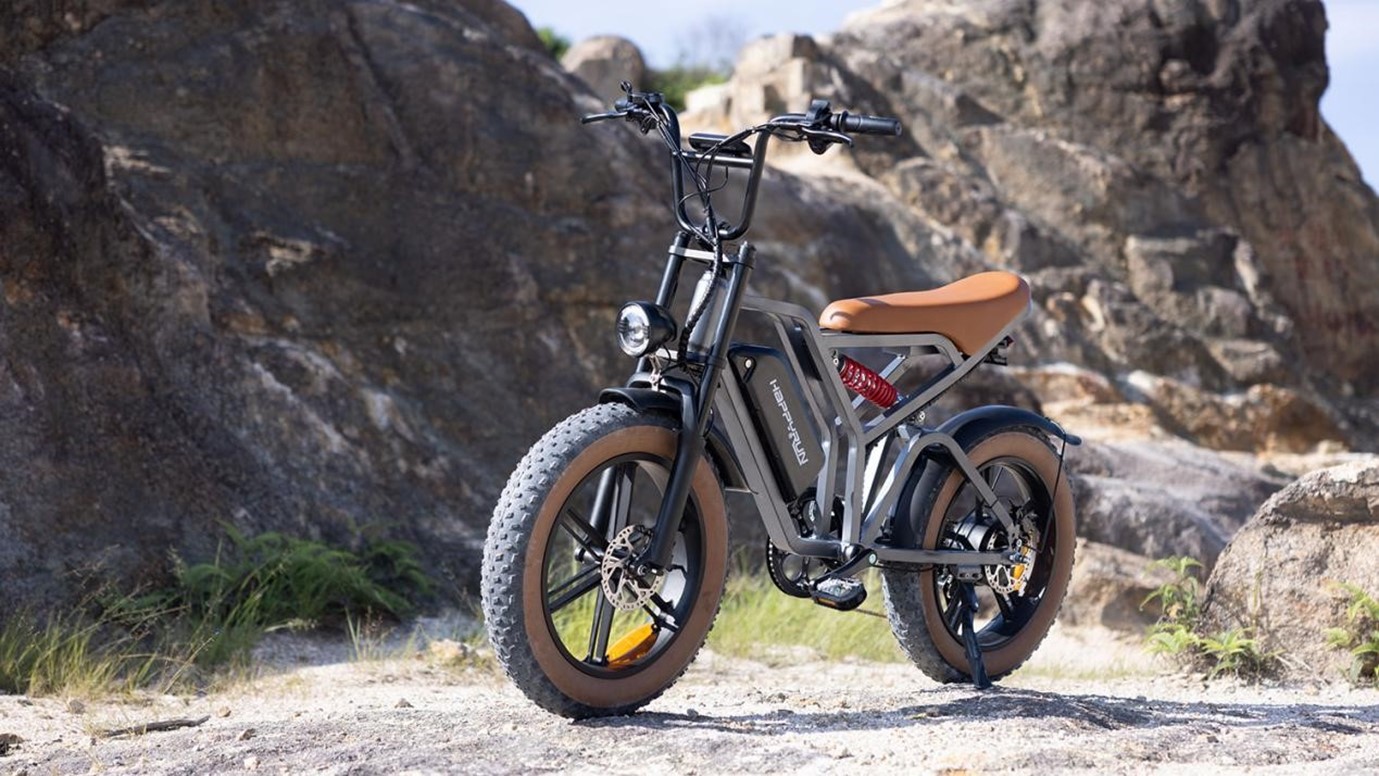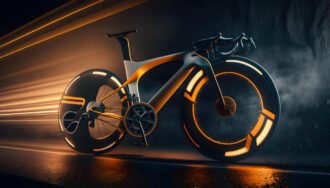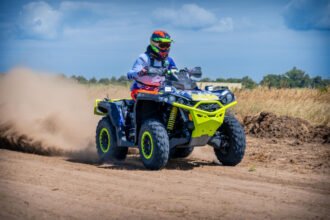Exploring Electric Mountain Bikes: Technology and Models
Electric bikes, also known as e-bikes, are bicycles powered by integrated electric motors and rechargeable batteries. While all types of electric bikes are growing in popularity worldwide, a subset known as electric mountain bikes (e-MTBs) has generated particular enthusiasm among off-road cycling enthusiasts. This comprehensive guide will provide an in-depth look at e-MTB technology, benefits, types, considerations for choosing the optimal model, maintenance best practices, and riding tips.
What are Electric Mountain Bikes (e-MTBs)?
Electric mountain bikes integrate electric pedal-assist systems into the frame and design of conventional off-road mountain bicycles. They use rechargeable battery packs and compact motors to supplement the rider’s pedaling power. While the rider still actively pedals like a traditional mountain bike, the electric motor adds extra oomph to flatten out hills, extend range, and tackle more challenging terrain. Electric motors also amplify speed and control on descents. The power boost makes e-MTBs accessible to more riders while expanding adventure. Components like sturdy frames, quality brakes, wide tires, and advanced suspension common to mountain bikes also define e-MTBs.
Benefits of Electric Mountain Bikes
Compared to standard mountain bikes, e-MTBs provide several key advantages:
- Enhanced riding experience – The extra assist makes climbing and overall mileage easier to achieve. Riders can venture farther.
- Accessibility for all fitness levels – Those newer to mountain biking need not be daunted by challenging climbs and distances. The electric power levels the playing field.
- Exploring new terrain – Tougher trails, steeper mountains, and extended distances become possible. Riders can challenge their limits comfortably.
- Increased control – Electric drive systems add traction and composed handling when descending rugged trails.
- More exciting downhill runs – Extending the range uphill means more rewarding downhill segments per ride.
- Environmentally friendly – E-MTBs run on battery power with zero emissions on the trail. Their use promotes sustainable riding.
Electric Bike Technology
Motor and Power Systems
Two main types of electric motors propel e-MTBs:
- Hub Motors – Simple and inexpensive. Positioned concentrically in the hub of either the front or rear wheel. Drawbacks are higher unsprung weight and limited traction compared to mid-drive systems.
- Mid-Drive Motors – Located in the frame at the bike’s crankset and pedals. Provides excellent weight distribution and natural application of power through the drivetrain. Enables great traction even at low speeds. The most common and recommended motor type for e-MTBs.
For maximum power and hill climbing capability, look for a mid-drive motor with at least 250W, optimally in the 250-750W power range. Higher wattage motors provide more torque and faster speed but at the cost of decreased range per battery charge. Different power modes allow adjusting the motor output.
Batteries and Range
Rechargeable lithium-ion battery packs provide the power source. Higher voltage batteries like 48V systems have become standard. Batteries mount to the bike’s down tube or integrate into other areas of the frame.
Battery capacity is measured in Watt Hours (Wh). Standard e-MTB batteries range from 400Wh to over 750Wh. Higher Wh equates to greater range, but also increases weight. Estimate e-MTB range by taking the battery’s Wh and dividing by 10 to 12 based on assist level and terrain to calculate miles of range. So a 500Wh battery can deliver around 40 to 50 miles of trail riding range under normal conditions. Remove batteries for off-bike charging after each ride.
Pedal Assist and Throttle Control
To activate the e-MTB motor and modulate power delivery, pedal assist, and throttle control are essential functions.
- Pedal Assist – Sensors detect the rider’s pedaling cadence, torque, or speed then smoothly engage the motor to provide proportional extra power. Multiple assist levels allow boost adjustments. Provides a natural feel.
- Throttle Control – Usually a handlebar thumb control. Lets the rider directly control motor output electronically. Useful for precisely applying extra power to tricky sections. Throttles vary power delivery from gentle to aggressive.
Well-tuned assist and throttle systems make applying the e-MTB’s power intuitive and effective.
Types of Electric Mountain Bikes
While any mountain bike can be electrified, some optimized e-MTB configurations exist:
Hardtail Electric Mountain Bikes
Hardtail e-MTBs incorporate an electric pedal assist system onto a frame equipped with front suspension but no rear suspension. This offers:
- Better pedaling efficiency – The stiff rear triangle maximizes pedal input compared to full suspension models.
- Lower cost – Suspension parts add expense. Hardtails are generally the most affordable e-MTB style.
- Lighter overall weight – The lack of rear suspension reduces weight, especially helpful for climbing.
- Ideal for less rugged terrain – Performs great on groomed singletrack and gravel paths.
Hardtail e-MTBs strike a balance of affordability, simplicity, and reasonably capable trail performance.
Full Suspension Electric Mountain Bikes
Full suspension e-MTBs incorporate suspension in both the front fork and the rear frame. Key characteristics:
- All-terrain abilities – Soaks up rugged descents and technical sections. Provides more control over uneven terrain thanks to the dual suspension system.
- Improved traction – The rear suspension keeps the rear tire better planted, even over bumps and drops.
- Enhanced rider comfort – Suspension absorbs impacts and vibration from the terrain. The experience feels more fluid.
- Adds weight – The extra suspension components come with an overall weight penalty.
Full-suspension e-MTBs offer unmatched rugged trail capability for aggressive and downhill-focused riding.
Fat Tire Electric Mountain Bikes
Fat tire e-MTBs utilize oversized tires on wider rims, normally 3 to 5 inches wide. These provide:
- Traction in loose conditions – The huge tire contact patch grips sand, snow, and muddy terrain.
- Suspension qualities – The fat, low-pressure tires inherently absorb bumps and vibration without a complex suspension system.
- Greater obstacle clearance – Easily rolls over rocks, roots, and other trail objects.
Choosing the Right Electric Mountain Bike
With an increasing array of e-MTB models available, selecting the ideal one for your needs and budget deserves careful evaluation.
Consideration Factors
Aspects to contemplate when choosing an e-MTB include:
- Budget – Prices range from under $2000 up to $10,000+. Set a spending limit.
- Riding Style – Cross country, enduro and technical riding have different e-MTB requirements.
- Terrain – Hardtail or full suspension? Fat tire? Consider the trails and conditions where you’ll ride.
- Range needs – Compute necessary battery capacity for a typical ride distance.
- Motor power – Low, medium or high wattage based on hills and assist desired.
- Suspension travel – 100-150mm for cross country, 150-170mm for aggressive all mountain riding.
- Component quality – Focus on durability to withstand harsh riding conditions.
- E-MTB weight – Heavier bikes are stable but require more power to climb.
Identify how and where you want to ride and match the e-MTB accordingly. Test rides also provide great insight. The HappyRun SUV ebike is worth researching.
Maintenance and Care
Aspects familiar to any mountain biker:
- Clean the bike regularly, inspect the frame for cracks, lubricate the drivetrain, and avoid high-pressure water around bearings and electronics.
- Closely monitor brake pads and rotors for wear – replace as required. Bleed brakes if spongy.
- Check tire pressures and tread condition before every ride.
- Keep suspension linkages clean and serviced per manufacturer recommendations.
- Periodically check all nuts, bolts, and mounts are tight before heading out.
Like any mountain bike, fundamental care prevents problems.
Battery and Motor Care
Additional considerations specific to e-MTBs:
- Fully recharge batteries immediately after each ride. Leaving batteries depleted damages them.
- Check battery contacts are free of debris and corrosion. Clean if needed.
- Store batteries indoors to protect from temperature extremes and the elements when not riding.
- Have certified shops periodically service the motor and controller to keep operating efficiently.
- Diagnose motor noises and trouble codes quickly to prevent problems.
Electric mountain bikes amplify the thrill and accessibility of off-road adventures. Integrated electric drive systems complement a rider’s output to flatten climbs, tame technical sections, and expand the range.

















